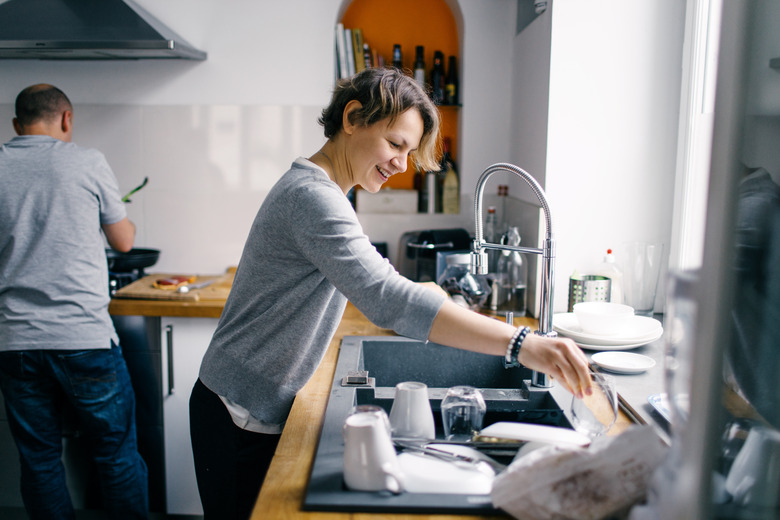How To Clean, Sanitize & Store Kitchen Equipment
Having a clean and well-organized kitchen in your home can be an amazing and powerful feeling. Simply having everything in an easy-to-find place, where it's clean and ready for use, makes cooking more of an adventure and less of a chore. But if you can never find what you need in your own kitchen, you can follow some simple steps to clean, sanitize and store kitchen tools and equipment.
Basic Cleaning Tips for Kitchen Equipment
Basic Cleaning Tips for Kitchen Equipment
Cleaning involves removing the visible debris on kitchen equipment, dishes and utensils. If you can see or feel something on your equipment, it's not clean. Fortunately, a general grease-fighting liquid dish soap, plus a clean and scrubby dishcloth, can get the job done in no time. If you have a dishwasher, you have another mighty tool in your arsenal.
Start by scraping any large chunks of food into the trash can. Dirty dishes can soak in warm, soapy water to loosen the debris, as long as they are made of a material that's appropriate for soaking. For example, you should never immerse electrical kitchen equipment, and wooden utensils or cutting boards can warp if they are left to soak for too long.
Next, you can put dishwasher-safe dishes into the dishwasher or hand wash them with a soapy dishcloth and rinse with clean water. Spray a solution of water and dish soap onto tough stains or stuck-on food on countertop appliances and let it sit for a few minutes. Scrub the stain or food away with your soapy dishcloth, then clean it with a wet dishcloth. Finally, wipe it dry.
How to Sanitize Your Kitchen
How to Sanitize Your Kitchen
After cleaning your kitchen equipment, it's time to sanitize it. Sanitizing kills bacteria that remain on your dishes after the visible debris has been removed. To kill this bacteria, you need to expose it to temperatures of at least 170 degrees Fahrenheit or apply a chemical solution, usually bleach-based. If your dishwasher has a sanitize option, run the cycle to both clean and sanitize your dishes.
Otherwise, combine 1 tablespoon chlorine bleach per 1 gallon of cool water and let your dishes soak in it for one minute. Then, allow them to air dry. For counter top appliances or electrical equipment, spray them with the diluted chlorine solution and allow it to air dry. You could also use commercial sanitizing wipes.
General Kitchen Equipment Storage Tips
General Kitchen Equipment Storage Tips
Proper storage and stacking of kitchen tools, utensils and equipment can make it infinitely easier to find what you need and to retrieve it easily. If you feel like you're re-enacting a bad infomercial every time you open a cupboard because lids fall out onto you, then getting organized can make your time in the kitchen far less stressful.
Follow just a few simple steps in storing kitchen tools and equipment. To start, make sure you only store clean and sanitized equipment. Next, try to have dedicated cupboards and drawers. For example, keep all of your Tupperware stacked together in a single drawer or cupboard. Keep lids organized in another area within easy reach, instead of mixing the two together.
Don't be afraid to subdivide your cupboards and drawers with baskets or organizers. Take advantage of over-the-door lid racks to organize your pot lids, keeping them out of the way but within reach. Also, think about what you frequently use and make sure it's easy to grab, such as your favorite spices.
Proper Storing and Stacking of Kitchen Utensils
Proper Storing and Stacking of Kitchen Utensils
When it comes to kitchen utensils, you can choose to hang them from hooks near your stove so that you can quickly grab what you need. Try to keep them out of range of stove splatter, though, so that they remain clean. Knife blocks or magnets should be stored near where you do your chopping.
Another option for frequently used kitchen utensils is to set them in an open-mouthed jar on the counter. Or, to keep them completely tucked away, organize them within a drawer. Subdivide the drawer, and don't be afraid to have more than one utensil drawer for maximum organization.
